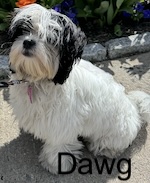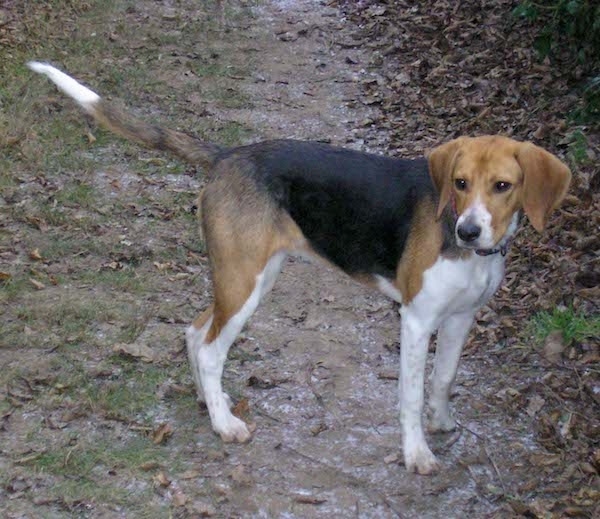
Austin the adult Harrier dog from France
har-ee-er 
The Harrier is similar to the English Foxhound, but smaller. The head is in proportion to the rest of the dog, with a bold forehead and a moderate stop. The muzzle is about the same length as the skull. The black nose is wide with open nostrils. The teeth meet in a level or scissors bite. The wide-set ears are medium in size, and brown or hazel in color. The low-set ears hang down beside the cheeks and are rounded at the tips. The topline of the back is level. The legs are long with round cat-like feet. The long tail is set high. The coat is short, fine and glossy, and can come in any color, but is often tricolored, lemon and white, red and white, or white and tan.
The Harrier is somewhat more playful and outgoing than the Foxhound, but not as much as the Beagle. Cheerful, sweet-tempered, and tolerant, it is excellent with children. This pack dog is good with other dogs, but should be supervised with non-canine pets. It prefers life in a pack with people, dogs or both. This active dog likes roaming, exploring, sniffing and trailing. Some Harriers like to bay. They are determined and watchful and require patient, firm training. It is important you are this dog's pack leader and that you provide the proper amount of mental and physical exercise, including daily pack walks, to avoid separation anxiety. When under exercised they can become a handful, possibly destructive and high-strung. There are two types, field lines and show lines (bench). Field types are bred for hunting and field trial work. The bench type is bred for conformation shows. Both types are energetic and need daily exercise, but field lines have a higher energy level and need even more exercise. The dominancy level in this breed varies even within the same litter. If you are not the type of person who can display a natural air of calm, but firm authority, then be sure to choose a pup that is more submissive. The temperament of both show and field lines vary widely, depending upon how the owners treat the dog and how much and what type of exercise they provide.
Height: 19 - 21 inches (48 - 50 cm) (behind the withers)
Weight: 40 - 60 pounds (18 - 27 kg)
Generally healthy, some have been known to develop hip dysplasia and epilepsy.
Harriers are not recommended for apartment life unless the owners are very active people who plan on taking them out daily for jogs, hikes or hunts. They are moderately active indoors and will thrive with acreage. They have a tendency to roam do to their hunting and tracking instincts. Do not let them off leash in an unsafe area.
Harriers will make excellent jogging companions and if not taken on a daily jog, they need to be taken on a long, daily, brisk walk. While out on the walk make sure the dog heels beside or behind the person holding the lead, never in front, as instinct tells a dog the leader leads the way, and that leader needs to be the human.
Varies greatly from 2 to 4 puppies with the average of about 7 puppies
About 10-12 years.
The shorthaired coat of the Harrier is easy to groom. Occasionally brush and comb out the dead hair. This breed is an average shedder.
While the exact origins are not clear, the Harrier is believed to have been bred down in size from the English Foxhound.While smaller than the Foxhound, it is larger than the Beagle. The breed has existed in America since the Colonial times. The breed was developed primarily to hunt hare, hence the name, and can also do well with fox. The dogs became popular in England due to their slower pace; hunters were able to keep up with them on foot. The dogs had superior stamina in the field, with excellent noses. The breed is more popular in England working in packs, and is still rare in the USA. The Harrier was recognized by the AKC in 1885.
Hound, AKC Hound
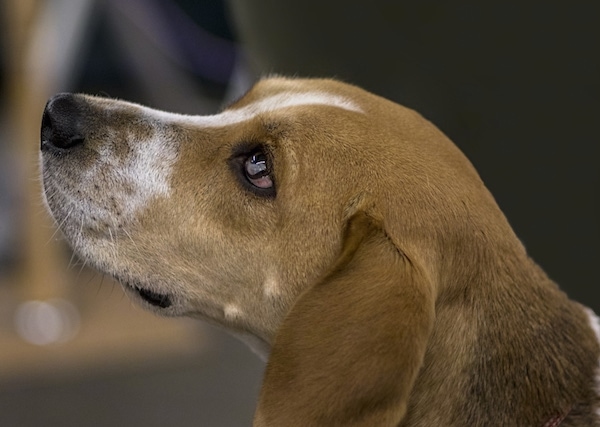
An adult Harrier dog—Photo courtesy of David Hancock
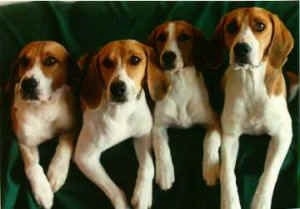
A pack of Harriers—Photo courtesy of Kingsbury Harriers

Brandy the Harrier at 6 years old—"She is a goofy puppy at heart."
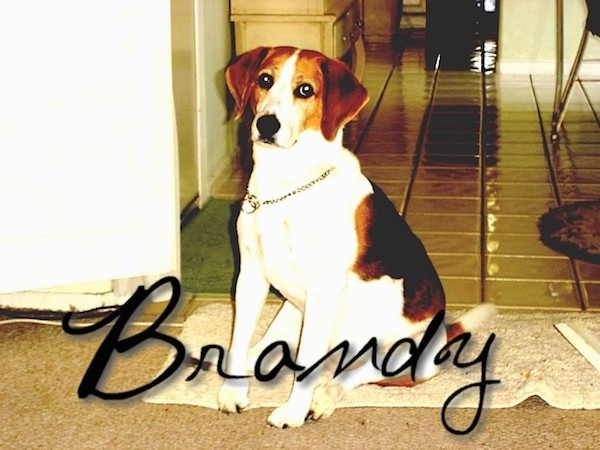
Brandy the Harrier at 6 years old
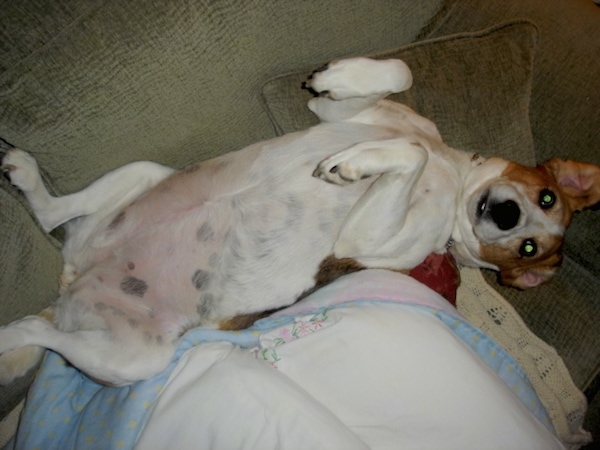
Brandy the Harrier at 6 years old wanting a belly rub

Brandy the Harrier at 6 years old
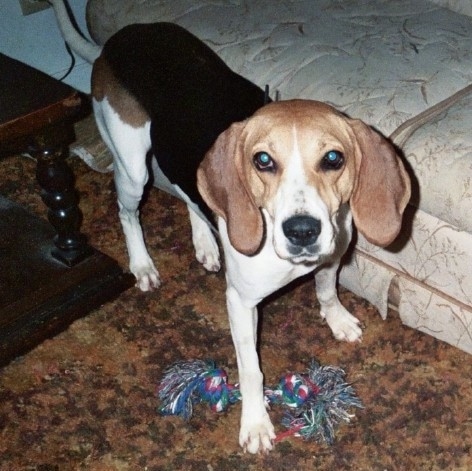
SuzyQ the Harrier
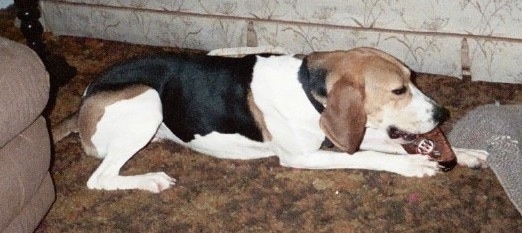
SuzyQ the Harrier
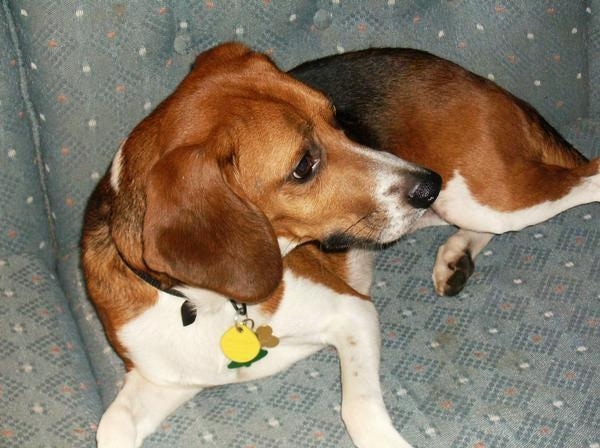
"This is Chevy. He is a 2 year old Harrier. He loves my 3 month old kitten King George. He is very energetic. I do live in an apartment, but he gets 3-4 good walks a day!!!! He is a very good dog and I love him!!!!"
